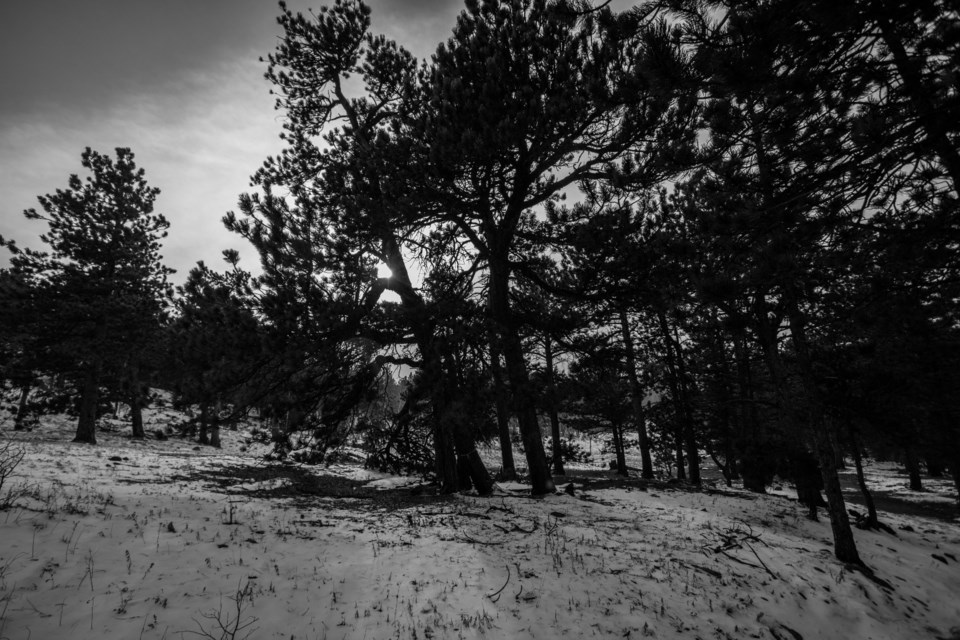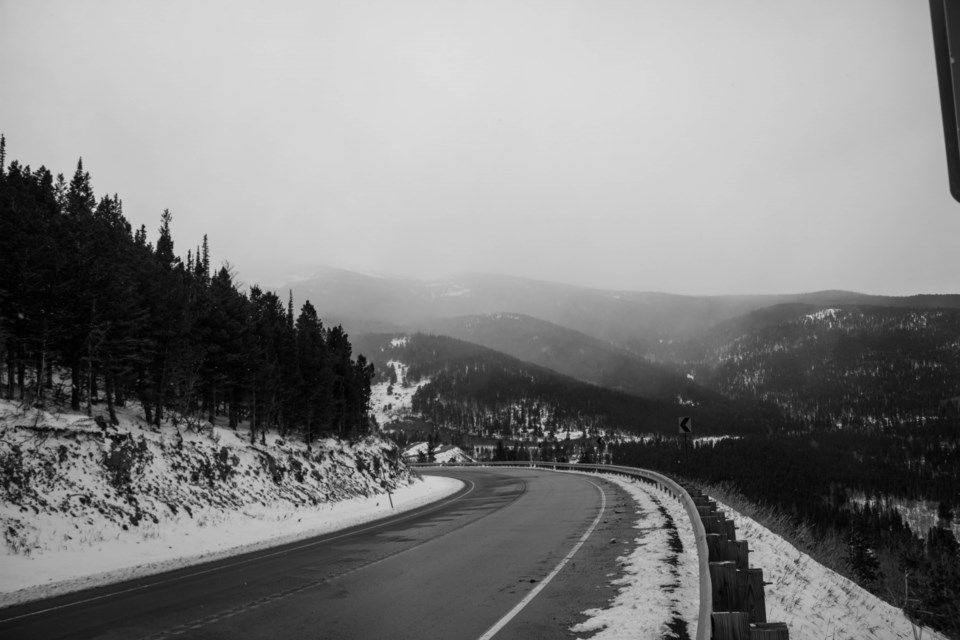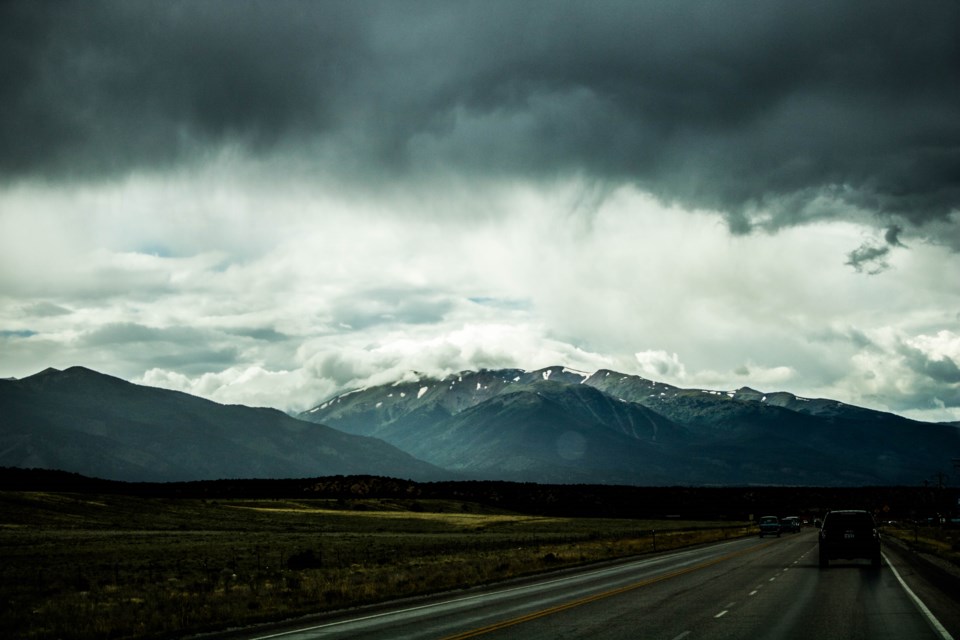At the trailhead mid-morning the skies were blue, with light fluffy clouds. The forecast called for clear skies, but clouds had other plans. Peals of thunder rattled carabiners, lightning illuminated the darkening sky and pellets of hail began hammering the trees.
A beautiful and serene hike can turn unpleasant when the storm rolls in, and potentially dangerous. Late summer and early autumn storms become more erratic and frequent in the mountains, and conditions can change rapidly. Moving into autumn, storms also can introduce ice and snow at higher elevations. What is the best way to be prepared for it?
Having quality gear is always the best place to start. Collapsible trekking poles, rain gear, ponchos and waterproof boots also are great to add to your equipment. High-end gear can get expensive, but is typically durable and worth the investment. Aiming for pieces that are lightweight and easy to compact can make hauling them around less exhausting.
Being prepared for the weather is not just a matter of gear, but calm and practice.
Colorado resident Krystal Nicole shared her worst experiences via social media. “Both times I was caught above the treeline while a rain and lightning storm started, my bright idea was to run back down to the treeline. As you can imagine running down hill on a trail in no- trail running hiking boots didn't go well. I lost both my big toenails.”
Having the right gear and the right mindset are just the start.
The modern digital era has seen an evolution in weather forecasting, and with the internet readily available to nearly everyone, checking the weather before a trip is much easier. The National Weather Service has pinpoint regional weather tracking, as well as safety information for weather-related dangers including monsoons, lightning storms and blizzards. Weather Underground is a free resource with forecasting and access to maps and radar. For planning ascents anywhere, and during any season, Mountain Forecast is a comprehensive resource for would-be climbers and mountaineers. It is important to check multiple sources when planning a trip, to make sure all forecasts are verified and the predictions match.
 Storms in autumn can bring snow, sleet and ice that make for treacherous footing.(Photo by Matt Maenpaa)
Storms in autumn can bring snow, sleet and ice that make for treacherous footing.(Photo by Matt Maenpaa)“There is no safe place outdoors. The only safe place from lightning is in a metal hard-topped vehicle or a well constructed building,” Gregory Hanson, warning coordination meteorologist for the National Weather Service, said via email. “Planning is key: Check the forecast before you go out, and summit before noon.”
Even with all the preparation and gear, it can still be difficult to plan for weather, said Joshua Berman Longmont-based author of “Moon Colorado Camping.”
“Thunder ripped all around us as we hiked westward through the Lost Creek Wilderness on the Colorado Trail,” he said via Facebook Messenger. “Afternoon storms in exposed areas were one of my biggest worries before the hike, and finally here they were. It started to drizzle, so I deployed all my rain gear and pack cover, getting it all set just as the rain stopped and the storms passed. We never did get dumped on, but learned later that hikers just a few miles up the trail got hammered — hail, wind, sheets of rain.
 Storms in autumn move in fast and arrive with snow.(Photo by Matt Maenpaa)
Storms in autumn move in fast and arrive with snow.(Photo by Matt Maenpaa)There already has been snow in the mountains this month, though most of it hasn’t stuck around. Some years ice and snowpack can be present on trails above 10,000 feet through late summer, making for a slippery ascent for the unprepared. Having a good pair of boots, and not just flip-flops or athletic shoes, is important. Boots alone,however, won’t provide the necessary traction to prevent a dangerous fall in the wilds. Crampons and traction cleats, such as Yaktrax or Microspikes, function like tire chains for your feet, and can be easily removed for sections of trail where they are not needed. Trekking poles also can help maintain balance while ascending or descending icy and rocky trails.
Denver outdoor writer Mindy Sink via Facebook Messenger shared her experience on an icy trail that made her appreciate proper footgear: “The hike that got me serious about microspikes was Calypso Cascades in Rocky Mountain National Park. It was mid-October, totally sunny and dry, then all of a sudden, ice and snow from a storm weeks before. It was treacherous with strangers linking hands to make it through the slickest spots. Seriously, I saw people hiking up in flip-flops and moccasins and I didn't wait to see them slip down. I went through three different traction options and highly recommend Kahtoola.”
Preparing for any hike by ensuring you have reliable equipment and knowledge of the weather conditions as well as trail length is key. The most important preparation, however, is putting safety above all else. If the weather conditions seem severe or more unpredictable than what was forecast, the best decision is to call off an outing.
“Many storms pass quickly. But it’s important to mentally prepare to turn around if you have to. Summiting a mountain is optional. Returning safely is mandatory,” Mark Lotto, a Colorado resident, said in a Facebook comment.



